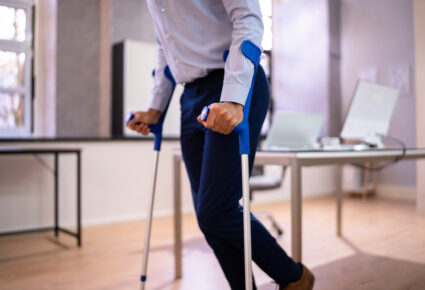5 Ways to Take Control of Your Pain
Studies show that the perception of pain can linger long after the body tissue itself has healed.
As PainScience points out, pain is not the inevitable result of injury, but rather our brain’s perception of it.
This complex experience differs greatly between individuals, with some bouncing back quickly from a work injury while others are debilitated by their pain.
Whatever your situation, here are five ways to reduce your pain experience.
1. Address your mindset
What you think, believe and expect can have major impacts on your health, so it’s worth paying attention to your mindset.
Catastrophic thoughts and anticipating a pain-filled future are a fast track to feeling more pain. As reported by Pathways, just thinking that we have a slipped disc has the potential to increase back pain.
More positive thoughts and a belief you will get better go a long way to addressing pain sensations.
2. Seek out support
A number of factors influence pain and disability outcomes including:
- Co-worker and supervisor support
- Treating practitioner relationships
- Family and friend support groups
- Language barriers
- Access to healthcare and community resources.
Your pain threshold may also be directly affected by the amount and quality of social support in place. Don’t be afraid to reach out if you need help!
3. Reduce your stress
Stress can make pain feel worse. A hormone called cortisol is released during times of heightened stress, worsening the perception of pain.
As Stanford explains, our muscles clench and spasm when we are stressed. As we tense up, our experience of pain is likely to be intensified.
You can reduce and manage stress by staying active, sleeping well and finding distractions from your pain. This could include walking – alone or with friends – catching up for a coffee or taking up a new hobby.
4. Raise your awareness
When it comes to pain, knowledge is definitely power. Educating yourself about pain is a great way to help you manage it more effectively.
According to PainScience, pain is just your brain’s opinion of what’s going on in your body. As we know, opinions differ greatly – and so do perceptions of pain.
Learning more about the rapidly growing field of pain science can help you reduce hypervigilance, catastrophising and fear avoidance, which all contribute to a more intense pain experience.
5. Desensitise your reactions
The brain cells that produce pain get better at producing it, the longer pain persists. In this heightened state of sensitivity, any kind of movement can be perceived as a threat – creating a vicious circle of pain and response.
Desensitisation is a useful way to treat hypersensitivity, normalising your body’s response to particular sensations. By slowly exposing yourself to small bursts of activity – the ones you used to associate with pain – you can gradually loosen the connection between movement and expectation of pain.
Need assistance with a rehabilitation plan? Contact the experts in workplace rehabilitation to find out more.



